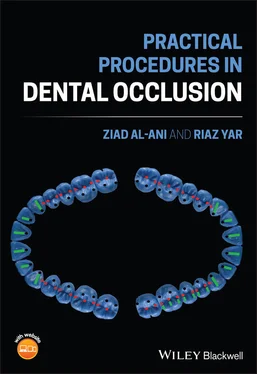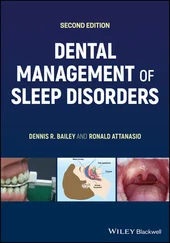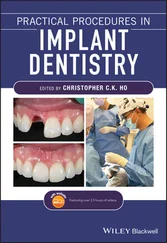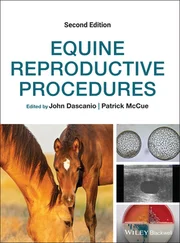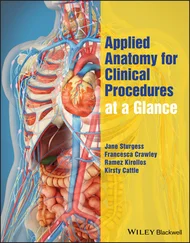Ziad Al-Ani - Practical Procedures in Dental Occlusion
Здесь есть возможность читать онлайн «Ziad Al-Ani - Practical Procedures in Dental Occlusion» — ознакомительный отрывок электронной книги совершенно бесплатно, а после прочтения отрывка купить полную версию. В некоторых случаях можно слушать аудио, скачать через торрент в формате fb2 и присутствует краткое содержание. Жанр: unrecognised, на английском языке. Описание произведения, (предисловие) а так же отзывы посетителей доступны на портале библиотеки ЛибКат.
- Название:Practical Procedures in Dental Occlusion
- Автор:
- Жанр:
- Год:неизвестен
- ISBN:нет данных
- Рейтинг книги:3 / 5. Голосов: 1
-
Избранное:Добавить в избранное
- Отзывы:
-
Ваша оценка:
- 60
- 1
- 2
- 3
- 4
- 5
Practical Procedures in Dental Occlusion: краткое содержание, описание и аннотация
Предлагаем к чтению аннотацию, описание, краткое содержание или предисловие (зависит от того, что написал сам автор книги «Practical Procedures in Dental Occlusion»). Если вы не нашли необходимую информацию о книге — напишите в комментариях, мы постараемся отыскать её.
A robust and accessible resource on occlusion for general dental practitioners Practical Procedures in Dental Occlusion
Practical Procedures in Dental Occlusion
Practical Procedures in Dental Occlusion — читать онлайн ознакомительный отрывок
Ниже представлен текст книги, разбитый по страницам. Система сохранения места последней прочитанной страницы, позволяет с удобством читать онлайн бесплатно книгу «Practical Procedures in Dental Occlusion», без необходимости каждый раз заново искать на чём Вы остановились. Поставьте закладку, и сможете в любой момент перейти на страницу, на которой закончили чтение.
Интервал:
Закладка:
So, we are chewing our food happily but when are the teeth touching? Jankelson (1953) stated that ‘contact of teeth seldom occurs during the act’. Wassell et al. (2008) state that the time teeth actually touch in total over a 24‐hour period is 17.5 minutes.
8 minutes empty swallowing contacts – equating to 500 swallowing contacts.
9.5 minutes of chewing contacts – the chewing contacts start to occur at the end phase of chewing providing the necessary information that the food is ready to be swallowed – equating to 1800 chewing contacts.
This means that teeth are designed for minimal contact and low forces so when we increase contact time and force, as in parafunction or hypernormal function (nail biting, chewing gum), the teeth can wear, crack or become inflamed (pulpitis), the muscles become inflamed or enlarged, the TMJ becomes inflamed and cartilage can become displaced.
So when do we know when to swallow? When the food is broken down to a size that is small enough for us not to choke and there is variability amongst individuals with regard to size. It was Parmeijer et al. (1970) who showed that the majority of swallowing contacts are in a habitual occlusal position, also called intercuspal position (ICP) or maximum intercuspation (MIP), using intraoral occlusal telemetry devices (a multifrequency transmitter) and less so in centric relation.
Deglutition (Swallowing)
This follows mastication, and is a complex co‐ordination of more than 25 pairs of muscles involving the mouth, pharynx, larynx and oesophagus (Miller 1982). The CPG for swallowing is located in the medulla oblongata that contains neurons which trigger, shape, and control the rhythmic swallowing patterns.
Deglutition comprises two phases as discussed by Miller (1982).
1 Oral preparatory phase including the pharyngeal phase (voluntary) – the bolus is formed and the positioning of the bolus posteriorly by the extrinsic muscles of the tongue and mylohyoid muscle propels the food further down.
2 Oesophageal phase (involuntary) – irreversible once initiated and consists of peristaltic contractions.
Once the food enters the stomach, the process of extracting the nutrients begins. Therefore, the impact of not breaking our food down properly does not just stop at missing teeth and aesthetic concerns; there is a greater impact on the overall health of the patient, especially gut health, and this can lead to disturbed sleep and possible triggers for parafunction.
If the input system is the same (we all have PDMRs, etc.), why is there such variability amongst individuals? The variability starts at the higher order level in the brain within the somatosensory system. This is continuously modulated and is not hardwired but plastic, meaning it has the ability to adapt to functional demand which can be affected by cognitive and emotional factors such as stress, etc. The term ‘neuroplasticity’ attempts to clarify this and underlines the need to expand our view of occlusion. Just because we have some individuals with greater adaptability, that does not give us carte blanche to perform less than optimal occlusal treatment. Then we have patients who are occlusally hypervigilant whom you would assume have a greater occlusal perception but that doesn't appear to be case; rather, the thoughts and emotions accompanying the altered occlusion appear to be more significant (Klineberg and Eckert 2015).
Phonetics
This is a complex neural network linking an estimated 100 muscles of the respiratory, laryngeal and supraglottal articulatory systems to convert a discretely specified linguistic message to a continuous stream of sounds that can be understood by others (Price 2012). The production of sounds involves the primary motor cortex along several cranial and spinal nerves to the various muscles of respiration and the vocal tract (Jurgens 2002). Most sounds are produced by outgoing air (egressive) and the vocal tracts act as a valve – abduction (opening) provides voiceless sounds and adduction (closing) creates a vibration effect (Martone and Black 1962) which results in voiced sounds. The frequency provides pitch and intensity provides loudness. This is further modified by resonators and articulators. The resonators are the larynx (major) and pharynx (minor) and articulation, which is extremely important in speech sounds, is provided by the lips, tongue and teeth (Elsubeihi et al. 2019). The links with prosthodontics are addressed later in the book.
Cognitive Trap
A dangerous trap that we all have fallen into prevents the dentist from understanding that ‘occlusal adjustment’ or ‘insertion of an occlusal appliance’ are not merely ‘mechanical’ interventions aiming to eliminate premature contacts or to change the occlusion and restore centric relation. Rather, these therapeutic procedures are likely to be accompanied by additional actions that contribute to symptom remission, such as the clinician speaking positively about treatments, providing encouragement and developing trust, reassurance and a supportive relationship (Benedetti and Amanzio 2011).
Conclusion
How do we link all this to what we do on a daily basis?
Mastication – dynamic contacts – group function, canine guidance.
Swallowing – static contacts – intercuspal position, maximum intercuspation.
The chapter has focused on the neural pathways involved in occlusion and linked the TMJ, muscles and teeth with the CNS.
References
1 Benedetti, F. and Amanzio, M. (2011). The placebo response: how words and rituals change the patient's brain. Patient Educ. Couns. 84: 413–419.
2 Byers, M.R. (1985). Sensory innervation of periodontal ligament of rat molar consists of unencapsulated Ruffini‐like mechanoreceptors and free nerve endings. J. Comp. Neurol. 231: 500–518.
3 Clark, G.T., Tsukiyama, Y., Baba, K., and Watanabe, T. (1999). Sixty‐eight years of experimental occlusal interference studies: what have we learned? J. Prosthet. Dent. 82: 704–713.
4 Elsubeihi, E.S., Elkareimi, Y., and Elbishari, H. (2019). Phonetic considerations in restorative dentistry. Dent. Update 46: 880–893.
5 Herren, P. (1988). Okklusale Taktilität beim bewussten Zusammenbeissen und beim Kauen (Occlusal tactility during conscious biting and during chewing). Thesis, University of Zurich, Zurich.
6 Jacobs, R. and van Steenberghe, D. (1991). Comparative evaluation of the oral tactile function by means of teeth or implant supported prostheses. Clin. Oral Implants Res. 2: 75–80.
7 Jankelson, B., Hofmann, G.M., and Hendron, J.A. (1953). The physiology of the stomatognathic system. JADA 46: 375.
8 Johnsen, S.E., Svensson, K.G., and Trulsson, M. (2007). Forces applied by anterior and posterior teeth and roles of periodontal afferents during hold‐and‐split tasks in human subjects. Exp. Brain Res. 178 (1): 126–134.
9 Jurgens, U. (2002). Neural pathways underlying vocal control. Neurosci. Biobehav. Rev. 26: 235–258.
10 Kandel, E.R., Schwartz, J.H., Jessell, T.M. et al. (2012). Principles of Neural Science, 5e, 1709. New York: McGraw‐Hill.
11 Kistemaker, D.A., Van‐Soest, A.J.K., Wong, J.D. et al. (2013). Control of position and movement is simplified by combined muscle spindle and Golgi tendon organ feedback. J. Neurophysiol. 109: 1126–1139.
12 Klineberg, I. (1980). Influences of temporomandibular articular mechanoreceptors on functional jaw movements. J. Oral Rehabil. 7 (4): 307–317.
13 Klineberg, I. and Eckert, S. (2015). Functional Occlusion in Restorative Dentistry and Prosthodontics, 1e. St Louis, MO: Mosby.
14 Lambrichts, I., Creemers, J., and van Steenberghe, D. (1992). Morphology of neural endings in the human periodontal ligament: an electron microscopic study. J. Periodont. Res. 27: 191–196.
Читать дальшеИнтервал:
Закладка:
Похожие книги на «Practical Procedures in Dental Occlusion»
Представляем Вашему вниманию похожие книги на «Practical Procedures in Dental Occlusion» списком для выбора. Мы отобрали схожую по названию и смыслу литературу в надежде предоставить читателям больше вариантов отыскать новые, интересные, ещё непрочитанные произведения.
Обсуждение, отзывы о книге «Practical Procedures in Dental Occlusion» и просто собственные мнения читателей. Оставьте ваши комментарии, напишите, что Вы думаете о произведении, его смысле или главных героях. Укажите что конкретно понравилось, а что нет, и почему Вы так считаете.
